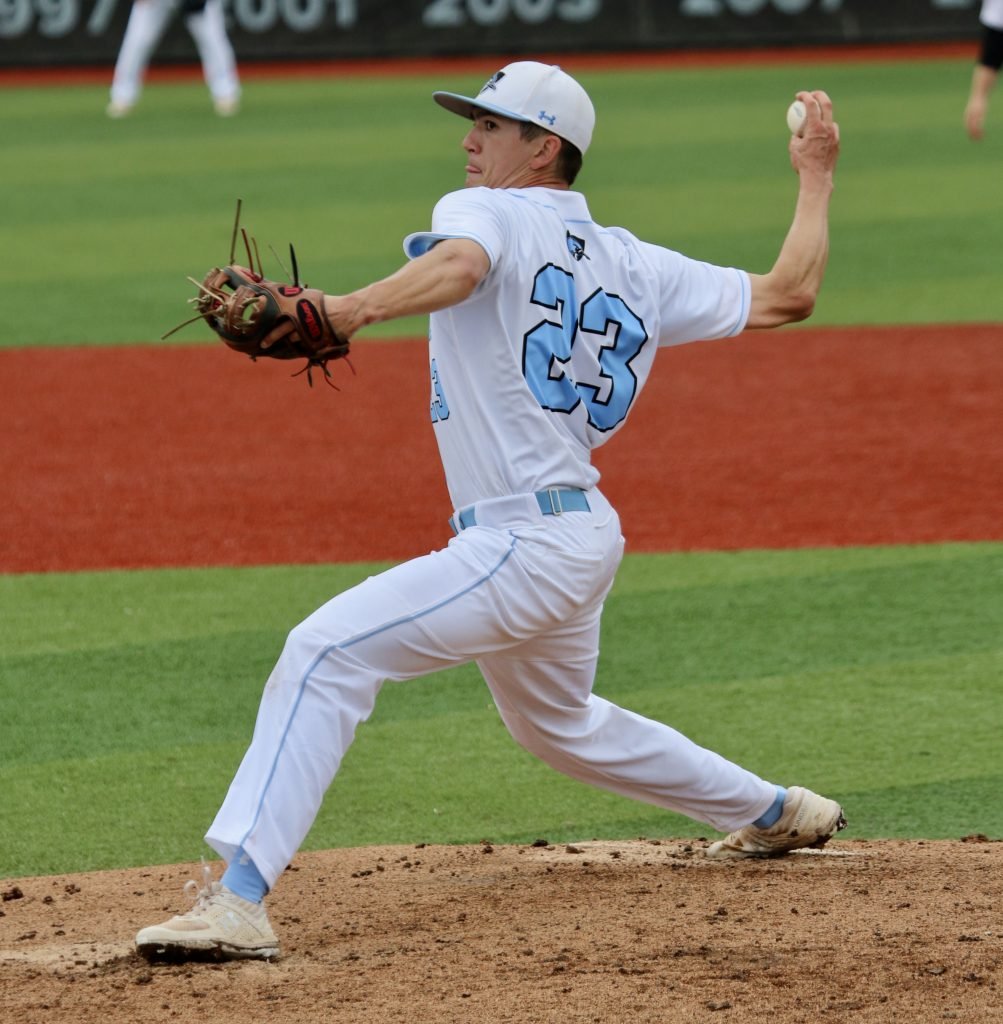
Major League Baseball pitchers like Justin Verlander or Clayton Kershaw often make getting a strikeout look simple and effortless. However, most pitchers, especially younger ones, struggle to let go of the bad body mechanics—especially throwing motions and grips—that became habits when they first started playing the game as children.
Brian Linton can relate. A third-year student in the Department of Electrical and Computer Engineering and a pitcher for the Johns Hopkins Blue Jays, Linton has struggled at times to make adjustments that will help make the ball do exactly what he wants it to do. So when he was offered a chance to use his engineering knowledge and experience as a pitcher to help other athletes improve their performances through an internship last summer, he jumped at the chance.
Linton worked for Baseball PDS, a Huntingdon Valley, Pennsylvania-based business co-founded by former Johns Hopkins pitcher Chez Angeloni, who graduated with an economics degree in 2009. The organization provides high-end baseball training and player development for clients playing in every level: from Little League to the pros.
Linton’s focus was on enhancing pitcher development—specifically, using his electrical and computer engineering background to work with technologies aimed at helping pitchers make the most of their abilities. One such technology tool uses Doppler radar to track a baseball’s flight, providing metrics on which way it’s spinning, how fast it’s traveling, and the number of rotations it makes before reaching home plate. These metrics help pitchers adjust their body movements to make the ball go faster or to hit the catcher’s mitt more accurately.
“Each day, I studied theories and methodologies related to the art of pitching, with subjects ranging from the physics of the flight of the baseball to breathing strategies for better mental performance,” Linton says. “I would then test and implement my findings on both myself and other pitchers as we strove to become the best we could be.”
Linton came away from the internship with a greater appreciation for the intricacies of the sport, saying he learned that baseball “is far more complex than simply home runs and strikeouts.” He became a better pitcher too. He is excited to unveil his new change-up this spring.




